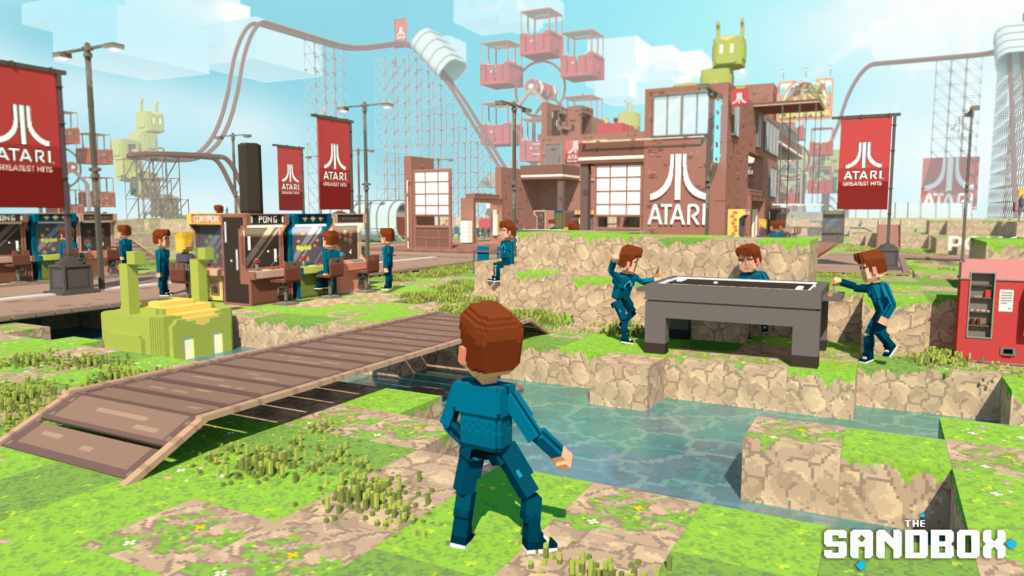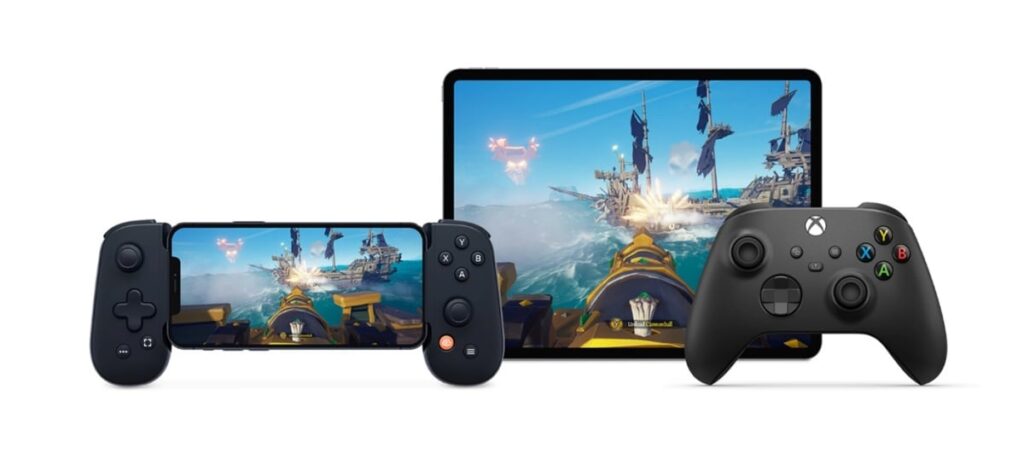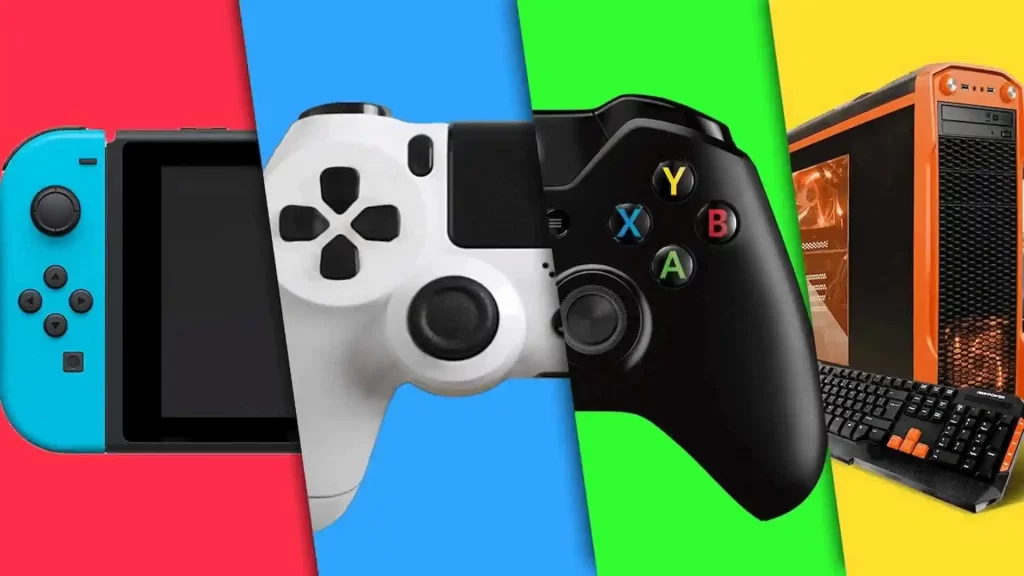Is cloud gaming the future of the gaming industry? For decades, gamers have been tethered to consoles and powerful PCs, confined by hardware limitations and hefty price tags.
But a revolution is brewing: cloud gaming, where games stream from remote servers, promising to unleash a new era of accessibility and unprecedented power. Now, the question on everyone’s mind is: is cloud gaming the future of video games?
First of all, what is cloud gaming?
Cloud gaming, also known as game streaming or gaming-as-a-service, is a form of online gaming where the processing and rendering of video games are performed on remote servers in data centers instead of on the user’s device. In cloud gaming, the game is executed on powerful servers, and the video and audio output is streamed to the player’s device over the internet in real time. This allows users to play games on a variety of devices, including low-end computers, smartphones, tablets, and smart TVs, as long as they have a stable and sufficiently fast internet connection.

5 key components of cloud gaming include:
- Remote Servers: High-performance servers located in data centers handle the game processing and rendering. These servers are equipped with powerful GPUs and CPUs to ensure smooth gameplay.
- Internet Connection: A robust and low-latency internet connection is crucial for a good experience. Lower latency helps reduce input lag, making the gaming experience more responsive.
- Client Device: Players can access cloud gaming services on a variety of devices, such as PCs, laptops, smartphones, tablets, and smart TVs. However, the device primarily serves as a display and input interface, as the actual game processing occurs on the remote servers.
- Streaming Technology: It relies on streaming technology to transmit the video and audio output from the server to the player’s device. Various codecs and compression techniques are used to optimize the streaming quality while minimizing latency.
- Input Devices: Players use controllers, keyboards, or other input devices to control the game. The input commands are sent to the remote server, where they are processed, and the resulting changes are then streamed back to the player’s device.
Cloud gaming offers several advantages, including the ability to play high-end games on low-powered devices, instant access to a wide variety of games without the need for extensive downloads or installations, and the potential for cross-platform gaming.
Read as well: What is the best platform for game development?
However, its success depends on the quality and reliability of the internet connection, as well as the performance of the servers. Popular cloud gaming platforms include NVIDIA GeForce Now, Google Stadia, Xbox Cloud Gaming (formerly known as Project xCloud), and others.
The story of cloud gaming
Imagine a world where a dusty laptop transforms into a portal to sprawling fantasy worlds, where smartphones morph into high-powered consoles, and where geography no longer dictates your gaming access. This is the promise of cloud gaming, a revolutionary technology rewriting the rules of interactive entertainment. But before soaring into this digital playground, let’s rewind and trace the fascinating narrative of its creation.
The seeds of this technological vision were sown in the early 2000s. G-cluster, a pioneering startup, unveiled its vision at E3 2000: remote servers delivering PC games on demand. While clunky and riddled with latency issues, it sparked a flame of possibility. OnLive, founded in 2003, fanned this flame, boasting streaming games at 60 FPS with impressive graphics. Their 2010 launch was met with excitement, but technical struggles and a lack of compelling content ultimately led to their demise.
Undeterred, the idea kept brewing. Gaikai, a Japanese company, refined the technology, streaming PlayStation 3 games with impressive accuracy. Sony, recognizing the potential, acquired Gaikai in 2012, laying the groundwork for their own PlayStation Now service. Meanwhile, tech giants like Amazon and Microsoft entered the fray, launching Luna and xCloud respectively, each vying for a slice of the burgeoning gaming market.
Yet, challenges remained. Reliable, high-speed internet wasn’t ubiquitous, and latency, the bane of real-time action games, lingered like a phantom. Concerns about data usage and pricing models added to the skepticism. Despite these hurdles, advancements in compression technology, global internet infrastructure upgrades, and innovative solutions like local caching are steadily bridging the gap, making cloud gaming a more viable reality.

Throughout the 2020s, cloud gaming continued to evolve, with additional players entering the market, partnerships forming, and ongoing improvements in technology. The competition intensified, with companies like Amazon entering the fray with Luna, further expanding options for gamers.
The story of cloud gaming is still unfolding, with ongoing developments in technology, infrastructure, and service offerings. As internet speeds improve and technology advances, cloud gaming is likely to play an increasingly significant role in the gaming industry.
Why cloud gaming might be the future of play?
As technology continues to advance, cloud gaming will likely play an increasingly significant role in the gaming ecosystem. Let’s see some of the reasons why cloud gaming might be the future of the gaming industry:
- Unchained from Hardware: Imagine playing the latest AAA titles on your smartphone, tablet, or even grandma’s dusty laptop. Cloud gaming transcends hardware limitations, making cutting-edge graphics and demanding gameplay accessible to virtually anyone with a decent internet connection. No more hefty consoles, expensive upgrades, or platform wars – just plug in, log in, and play.
- Democratization of Play: Forget hefty upfront costs and limitations like regional availability. Cloud gaming services often offer subscription models, letting gamers access a vast library for a monthly fee. This opens the door for casual players and budget-conscious enthusiasts to explore diverse genres and titles without breaking the bank. Moreover, cloud gaming can reach underserved regions where powerful hardware might be a luxury, fostering a truly global gaming community.
- Pushing the Boundaries: The processing power of remote servers means developers can push the graphical and gameplay boundaries without worrying about consumer hardware limitations. Imagine sprawling open worlds rendered in photorealistic detail, physics simulations so intricate they blur the line between virtual and real, and AI so advanced it rivals your best friend (okay, maybe not that advanced). With cloud gaming, the future of gaming promises to be visually stunning and mechanically breathtaking.
Challenges of cloud gaming
While cloud gaming holds considerable promise, it faces significant challenges that impact its widespread adoption. A fundamental requirement for a seamless cloud gaming experience is reliable, high-speed internet connectivity. Even with robust internet connections, latency issues can disrupt the fluidity of fast-paced action games, undermining the immersive experience that gamers seek.
Moreover, the imposition of data caps and the intricacies of pricing models present apprehensions for users who engage in extensive gaming sessions. The fear of exceeding data limits or encountering unexpected costs can deter potential subscribers from fully embracing cloud gaming services.

Additionally, the dependence on stable internet infrastructure creates accessibility gaps, particularly in underserved or remote areas where high-speed internet may not be readily available. This digital divide limits the potential audience for cloud gaming, preventing it from reaching its full demographic spectrum and leaving some gamers without the means to partake in this evolving gaming paradigm.
To overcome these challenges and propel cloud gaming into the mainstream, ongoing efforts are required to enhance internet infrastructure globally, reduce latency, and develop more flexible pricing models. Bridging the accessibility gaps is essential to ensuring that cloud gaming becomes an inclusive and accessible gaming platform for enthusiasts around the world, regardless of their geographical location or economic circumstances.
Read also: How to learn C# – a comprehensive guide
Cloud gaming: the evolution of gaming technology
In conclusion, the evolution of gaming technology has brought us to the threshold of a new era, where the cloud gaming paradigm stands as a promising contender for the future of play. The narrative of cloud gaming, from its early visions to the current competitive landscape, showcases its potential to transform how we experience interactive entertainment.

Perhaps the future of gaming isn’t solely cloud-based. A hybrid approach, where powerful consoles coexist with streaming services, might be the most realistic scenario. Gamers can choose the experience that best suits their needs and preferences, be it the tactile feedback of a controller or the freedom to play anywhere.
Ultimately, cloud gaming’s potential is undeniable. It removes barriers, expands possibilities, and promises a future where anyone, anywhere, can experience the magic of video games. While challenges remain, the future of gaming looks bright, filled with endless possibilities streaming over the horizon.
If you see your future as being a worker in the gaming industry, you can start your journey with Main Leaf! We can help you develop your first game, and our team is going to support you front-to-end to be sure you feel safe and confident the whole way! Be sure to reach out to us today for more information.

